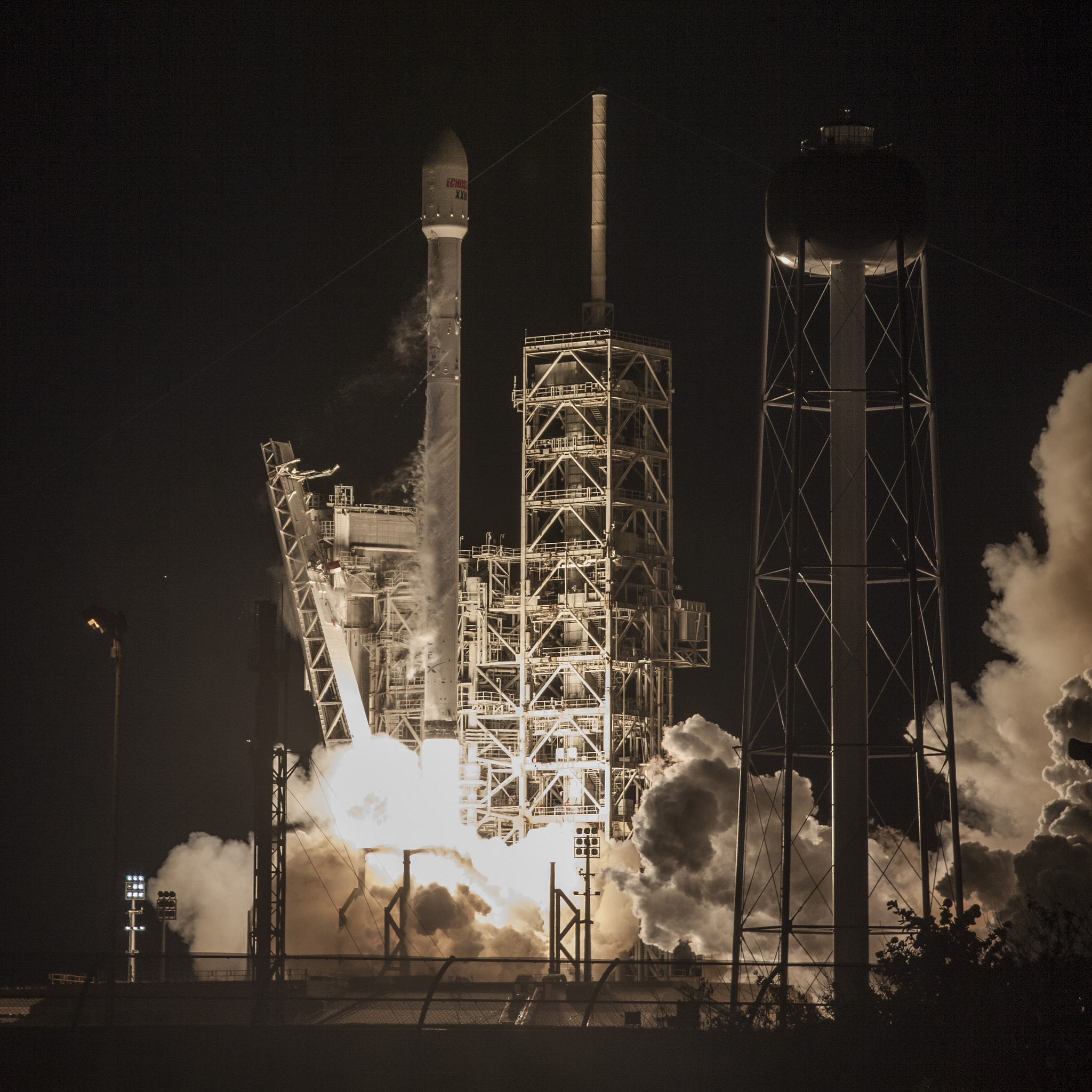SpaceX Falcon 9 upper stage breaks up in Earth's atmosphere, 5 years after launch
The rocket stage helped heft the Echostar 23 satellite to orbit in 2017.

A SpaceX rocket's upper stage appears to have broken up safely over Mexico, five years after sending a satellite into space.
Local reports on Twitter indicated that a part of the Falcon 9 that sent the Echostar 23 mission aloft in March 2017 met its demise Saturday (Feb. 6) after falling into the Earth's atmosphere.
"Tonight a 'meteorite' has been seen falling over northern Mexico," Spanish-language feed Frontera Espacial tweeted along with a video showing the disintegrating second stage.
A meteorite is a space rock that has made it all the way through the atmosphere and landed on the ground, although in this case the rocket stage completely disintegrated high above Earth, according to Frontera, so it wasn't really a meteorite. And as you can see below, this Twitter feed was just one of several that spotted the disintegrating rocket.
Related: See the evolution of SpaceX rockets in pictures
She’s breaking up, she’s breaking up!Around 1am, Gen saw this incredible spectacle streak across the Cabo sky for over a minute. It is a spacecraft breaking at 17,500 MPH. Various parts break off the bright main mass, and separate from differential drag in the upper atmosphere. pic.twitter.com/B53sHz1axMFebruary 7, 2022
🔥 FALCON 9 DE SPACEX CAE SOBRE MÉXICO 🇲🇽Esta noche se ha visto un "#Meteorito" cayendo sobre el norte de México.🚀 En realidad era la segunda etapa de un Falcon 9 de SpaceX lanzado en marzo del 2017 con la misión EchoStar23.Se ha desintegrado en la atmósfera completamente. pic.twitter.com/5ERaFTMBJ2February 6, 2022
Luces en el cielo.Se confirma que fueron los restos de la segunda etapa de el coete Falcon 9 de SpaceX lanzado en marzo del 2017 con la misión EchoStar23. Mismo que de desintegro completamente en la atmósfera por la fricción https://t.co/uLCvo9bpjrFebruary 6, 2022
Neither SpaceX nor its founder, Elon Musk, commented on the Falcon 9's disintegration on Twitter. It's very normal for rocket stages to burn up in the Earth's atmosphere, however, so it may be that neither saw the need to discuss the matter.
The reentry of the Falcon 9's upper stage was confirmed on the Aerospace Corporation's website, which tracks upcoming reentries of satellites and space vehicles.
Get the Space.com Newsletter
Breaking space news, the latest updates on rocket launches, skywatching events and more!
Echostar 23, which that Falcon 9 stage helped put into space, was launched to geostationary transfer orbit some 22,300 miles (35,900 kilometers) above Earth and was initially targeted for an orbital position above the equator at 45 degrees west longitude.
Its initial mission was to provide broadcast, internet and other communications services to Brazil. The satellite is operational and expected to last for at least another decade, according to NASA.
Follow Elizabeth Howell on Twitter @howellspace. Follow us on Twitter @Spacedotcom or on Facebook.
Join our Space Forums to keep talking space on the latest missions, night sky and more! And if you have a news tip, correction or comment, let us know at: community@space.com.

Elizabeth Howell (she/her), Ph.D., was a staff writer in the spaceflight channel between 2022 and 2024 specializing in Canadian space news. She was contributing writer for Space.com for 10 years from 2012 to 2024. Elizabeth's reporting includes multiple exclusives with the White House, leading world coverage about a lost-and-found space tomato on the International Space Station, witnessing five human spaceflight launches on two continents, flying parabolic, working inside a spacesuit, and participating in a simulated Mars mission. Her latest book, "Why Am I Taller?" (ECW Press, 2022) is co-written with astronaut Dave Williams.









